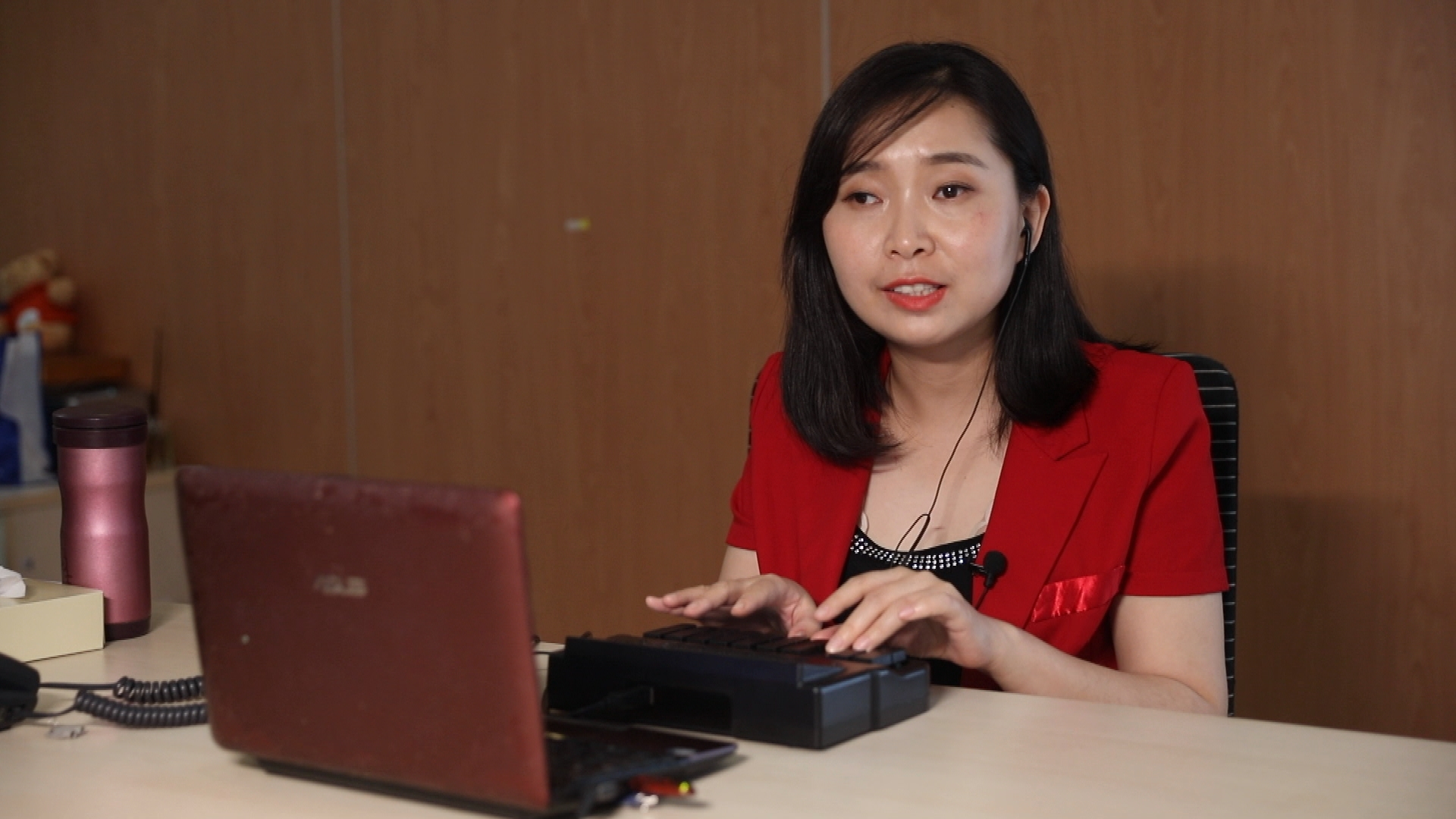03:17

"How could it be possible to type 260 characters a minute on such a small keyboard? I was instantly fascinated," said Zhu Xueyuan, describing her reaction when her university roommate demonstrated stenography to her in their dormitory. Such was her fascination that within three years, Zhu had become China's first visually-impaired certified senior stenographer.
As a child, Zhu had normal eyesight and excelled at school. But in high school, she began to suffer from night blindness, which led to the rapid deterioration of her vision. Although she managed to obtain a degree in special needs education from Changchun University, she was unable to find work as a teacher.
"Everything went well in the trial teaching class," she explained. "But I failed the written test because I couldn't read the characters on the paper or finish on time."

Zhu Xueyuan practices stenography. /CGTN Photo
Zhu Xueyuan practices stenography. /CGTN Photo
So, in 2009, she started to work for the Beijing One Plus One Disabled Persons' Culture Development Center, writing content for their radio station. At the same time, she was teaching herself stenography. "There were no stenography courses for the visually-impaired," she said. "My mother read the textbooks out loud for me, and I practiced on a steno machine. After a while, my typing speed was up to 100 characters a minute. Without professional training, that was the best I could hope for."
In 2010, Zhu was selected for a professional stenography training course for the visually-impaired, organized by the Beijing Stenography Association.
"It was the first time I'd trained visually-impaired students," said Liao Qing, who was in charge of Zhu's training. "It was also the first time I heard about screen-reading software and how visually-impaired people could use a computer with it." He was impressed by Zhu's talent and determination to succeed.
"Technique wasn't an issue for her. A senior stenographer types without looking at the keyboard. She was in that situation when she started, which was an advantage. On the other hand, she needed to memorize more. There's a prompt-line in our system, but as she can't see it she had to memorize it."

A qualified senior stenographer needs to achieve a typing speed of 220 characters a minute. Zhu would practice from 8 a.m. to 10 p.m. every day. "People around me said I was obsessed. My fingers would move even when I was listening to the radio," she said.
After two years of training and practice, Zhu Xueyuan qualified. As a senior stenographer, she became the head of a team responsible for conference reporting jobs. In 2017, she found a full-time job at United Family Hospital, working as a stenography secretary. Her responsibilities there range from recording the minutes of meetings to producing social media articles.
China has more than 17 million visually-impaired people. Of those who are in employment, most are working as masseurs. Although doing massage has traditionally been a means for those with little or no vision to earn a living, these days the development of screen-reading software and the emergence of smartphones have offered more options.
However, Zhu Xueyuan believes that access to education and employment for the visually-impaired remains too limited. "Some test papers are not available in Braille or can't be read by a computer," she complained.
However, reflecting on her own career success, she identified two areas where the visually-impaired themselves could improve: mobility and communication skills. "Expressing yourself appropriately and improving your mobility are skills we need to learn and enhance," she said, adding, in particular, that the visually-impaired should have the courage to get out of the house and take public transport.
Generally, though, she maintains a positive outlook. "I don't think there's anything we can't do," she asserted. "There's a saying I agree with: When God closes a door, he opens a window. Being visually-impaired, we have to look for our particular window."